When it comes to designing the exterior of your home, choosing suitable materials can make all the difference. Exterior house stone is a popular choice for homeowners looking to add elegance and durability to their home’s exterior. Let’s see types of exterior house stone.
There is something about a house with exterior house stone that just exudes luxury, elegance, and sophistication. If you want to add stone to the exterior of your house, you are in for a treat! We have curated a comprehensive list of various types of exterior house stone options to choose from – each with its unique look and feel.
3 Natural Types of Exterior House Stone
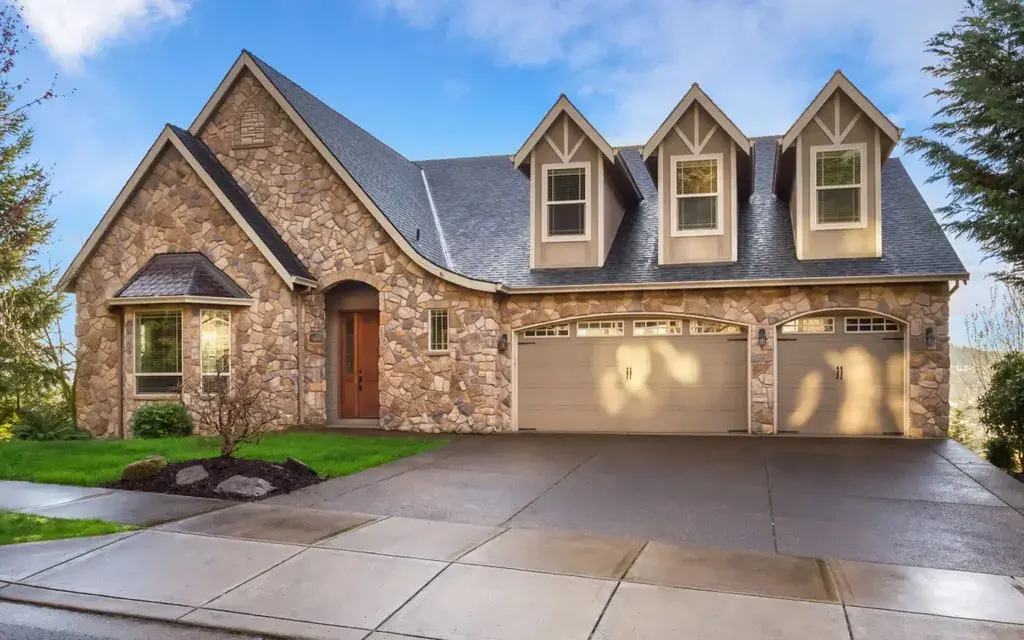
Natural types of exterior house stone is a timeless and versatile building material used for centuries in construction and design projects. Many different natural types of exterior house stones are available, each with unique characteristics and properties. Some of the most popular natural types of exterior house stone include granite, limestone, and sandstone.
- Granite: It is a complex and durable exterior house stone commonly used for countertops and flooring. It is known for its natural beauty and comes in various colors, including black, white, and shades of grey.
- Limestone: It is a sedimentary rock known for its soft, porous texture. It is often used for building facades, and fireplace surrounds.
- Sandstone: It is a sedimentary rock that is known for its unique grain patterns. It is often used for flooring, walls, and cladding.
Why Choosing the Right Type of Exterior House Stone is Important?
When choosing the right types of exterior house stone for your exterior facade, it’s essential to consider your area’s climate and weather conditions. For example, granite and limestone are more durable and resistant to weathering, making them a good choice for areas with high rainfall or extreme temperatures. Sandstone and slate, however, are more porous and may require more maintenance in such environments.
6 Ways to Design with Types of Exterior House Stone

Cladding or Veneer: One of the most popular ways is to use it as cladding or veneer on the exterior walls. This can create a beautiful and natural look that will enhance the overall aesthetic of the building.
Paving: Another way to incorporate natural types of exterior house stone into the exterior design is to use it as a paving material for walkways, driveways, and patios.
Colours: When designing with natural types of exterior house stone, it’s essential to consider different design elements such as color, texture, and pattern. For example, choosing a natural stone with consistent color and texture can create a more modern and minimalist look.
Patterns: On the other hand, choosing a natural type of exterior house stone with a unique pattern and variation in color can create a more traditional and rustic look.
Roofing and Siding: It’s also essential to consider how natural stone will harmonize with other building materials. For example, using natural types of exterior house stone that complement the color and texture of the building’s roofing and siding can create a cohesive and balanced look.
Size and Shape: Additionally, using natural types of exterior house stone in a complementary size and shape to the building’s architecture can enhance its overall aesthetic.
15 + Inspiring Options to Explore the Endless Possibilities of Natural Exterior House Stone Design
1. Limestone: Exterior House Stone
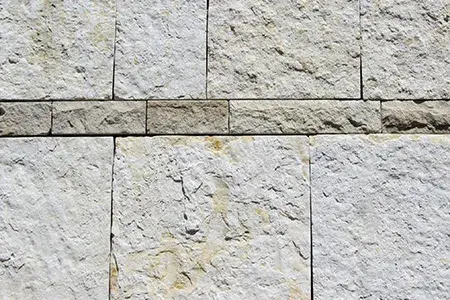
Limestone is a sedimentary rock that is often used for building and construction. It is a soft, porous type of exterior house stone typically light in color and has a smooth, uniform surface. Limestone is a popular choice for homes that want a traditional or European look.
Why Limestone?
- It is durable, easy to work with, and readily available
- It has a natural, attractive appearance that can add aesthetic value to a home.
- Limestone is a relatively soft stone, which makes it easy to carve and shape into various decorative elements, such as window surrounds and door frames.
2. Sandstone: Exterior House Stone
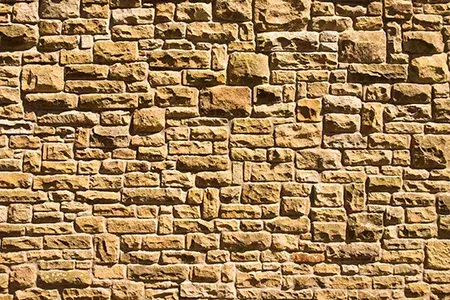
Sandstone is a sedimentary rock made up of sand-sized grains of rock and mineral particles. It is a durable and versatile type of exterior house stone that is available in a wide variety of colors and patterns. Sandstone is a popular choice for homes with a rustic or natural look.
Why Sandstone?
- It is a durable and weather-resistant material that can withstand the elements.
- It is also relatively easy to work with and can be cut into various shapes and sizes to fit a variety of architectural styles.
- Sandstone is a natural material that can add a unique aesthetic to the exterior of a building.
3. Granite: Exterior House Stone
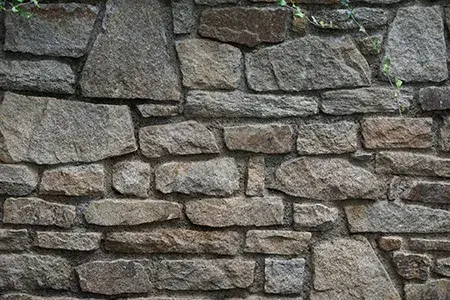
Granite is a complex, igneous rock formed from cooled magma or lava. It is a very durable type of exterior house stone that is available in a wide variety of colors and patterns. Granite is a popular choice for homes with a modern or contemporary look. Click here to see natural stone for house exterior.
Why Granite?
- It is extremely durable and resistant to weathering and erosion.
- It is also a very hard and dense stone, making it resistant to cracking or chipping.
- Granite is also fireproof, which makes it a great option for building in areas that are prone to fires.
- Granite is a natural material that can add a unique aesthetic to the exterior of a building.
- It also can be available in many colors, which makes it a versatile option for different architectural styles.
4. Marble: Exterior House Stone
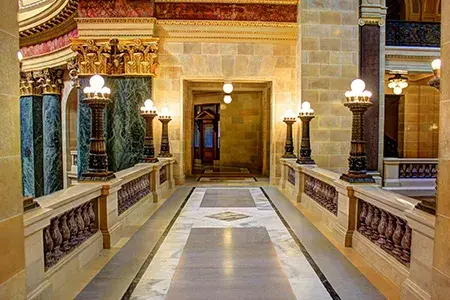
Marble is a metamorphic rock that is formed from limestone or dolomite. It is a soft and porous type of exterior house stone, typically white or light in color. Marble is a popular choice for homes with a classic or elegant look.
Why Marble?
- It is durable, resistant to weather and moisture, and has aesthetic appeal.
- It also adds value to a property and is low maintenance.
5. Travertine: Exterior House Stone
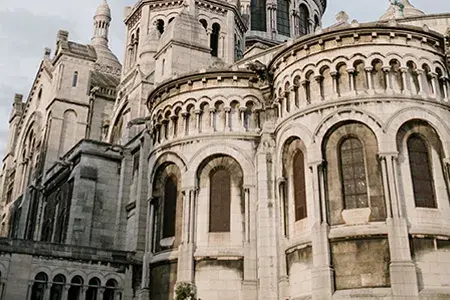
Travertine is a type of limestone that is formed from hot springs or geysers. It is a porous type of exterior house stone that is available in a wide variety of colors and patterns. Travertine is a popular choice for homes that want a natural or rustic look.
Why Travertine?
- It has natural beauty, versatility, durability, and low maintenance.
- It is also resistant to weather, moisture, and heat, making it a suitable option for outdoor use.
6. Slate: Exterior House Stone

Slate is a metamorphic rock formed from sedimentary rocks such as shale and mudstone. It is a very durable type of exterior house stone that is available in a wide variety of colors and patterns. Slate is a popular choice for homes with a traditional or rustic look.
Why Slate?
- It is durable, weather resistant, and has a unique natural appearance.
- It is also low maintenance and fireproof, making it a popular choice for outdoor cladding.
7. Bluestone: Exterior House Stone
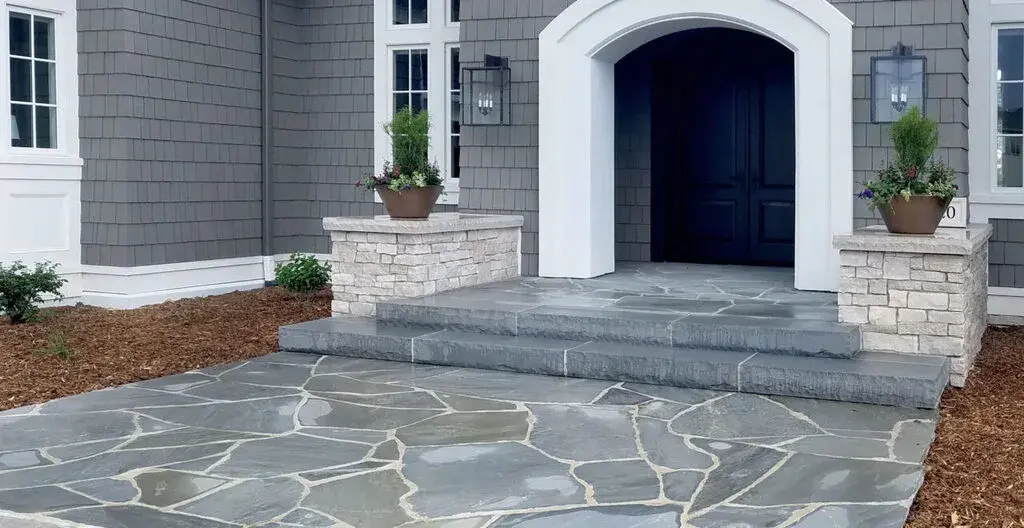
Bluestone is a type of sandstone that is typically blue or grey. It is a durable and versatile type of exterior house stone often used for paving and flooring. Bluestone is a popular choice for homes that want a natural or rustic look.
Why Bluestone?
- It is durable, resistant to weather and moisture, and has natural beauty.
- It has a unique blue-grey color and can add character and value to a property.
- It is also low maintenance and slip-resistant, making it a popular choice for outdoor surfaces.
8. Quartzite: Exterior House Stone
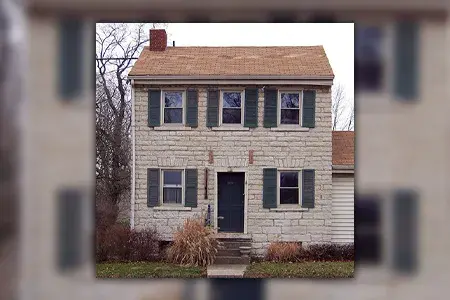
Sandstone is metamorphosed into quartzite, a metamorphic rock. It is a very durable type of exterior house stone that is available in a wide variety of colors and patterns. Quartzite is a popular choice for homes with a modern or contemporary look. It is best natural stone for house exterior.
Why Quartzite?
- It is durable, requires low maintenance, and is resistant to extreme weather and temperature fluctuations.
- It is also prized for its natural beauty and wide range of color options.
9. Fieldstone: Exterior House Stone
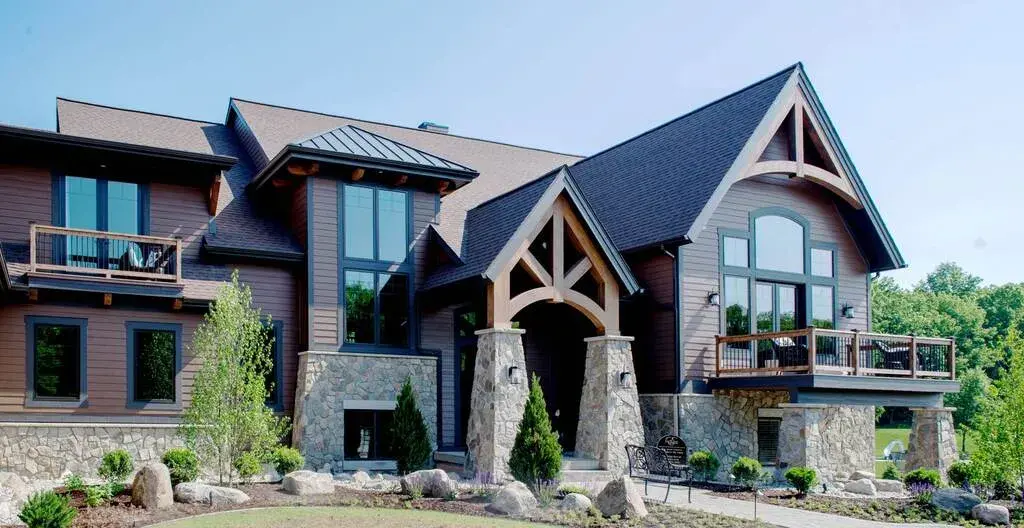
Fieldstone is a type of natural stone that is typically found in fields or on the sides of hills. It is a natural and rustic type of exterior house stone that is available in a wide variety of colors and patterns. Fieldstone is a popular choice for homes with a traditional or rustic look.
Why Fieldstone?
- It has natural beauty, unique texture and color, and durability.
- It also provides good insulation and is eco-friendly, being a natural and abundant material.
10. Ashlar Exterior House Stone
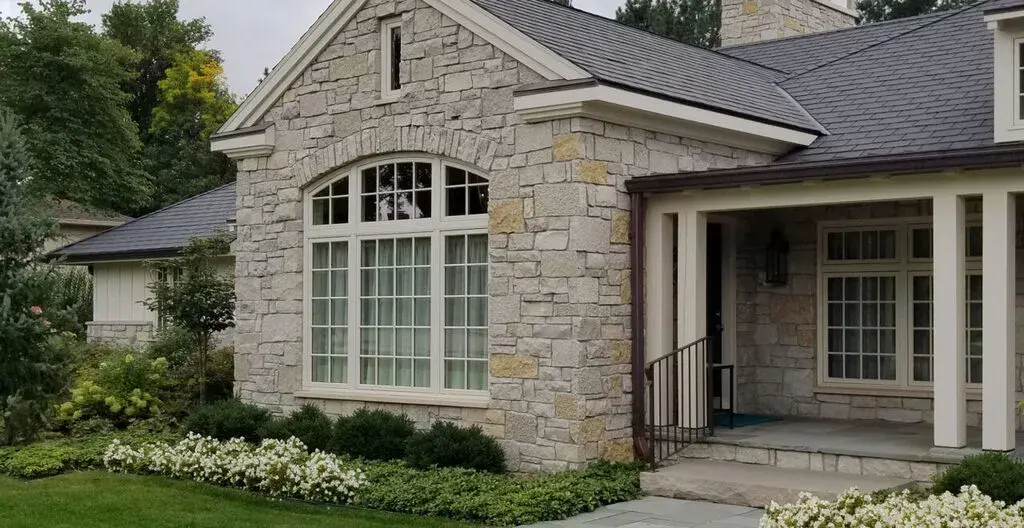
Ashlar stone is a type of cut stone typically square or rectangular. It is a very durable type of exterior house stone that is available in a wide variety of colors and patterns. Ashlar stone is a popular choice for homes that want a traditional or formal look.
Why Ashlar stone?
- It has a uniform appearance with precise, clean lines.
- It provides a classic and timeless look to homes and is often used in traditional, colonial, and Georgian-style architecture.
- Ashlar stone is also durable and low maintenance, making it a practical choice for exterior use.
11. Cast Exterior House Stone
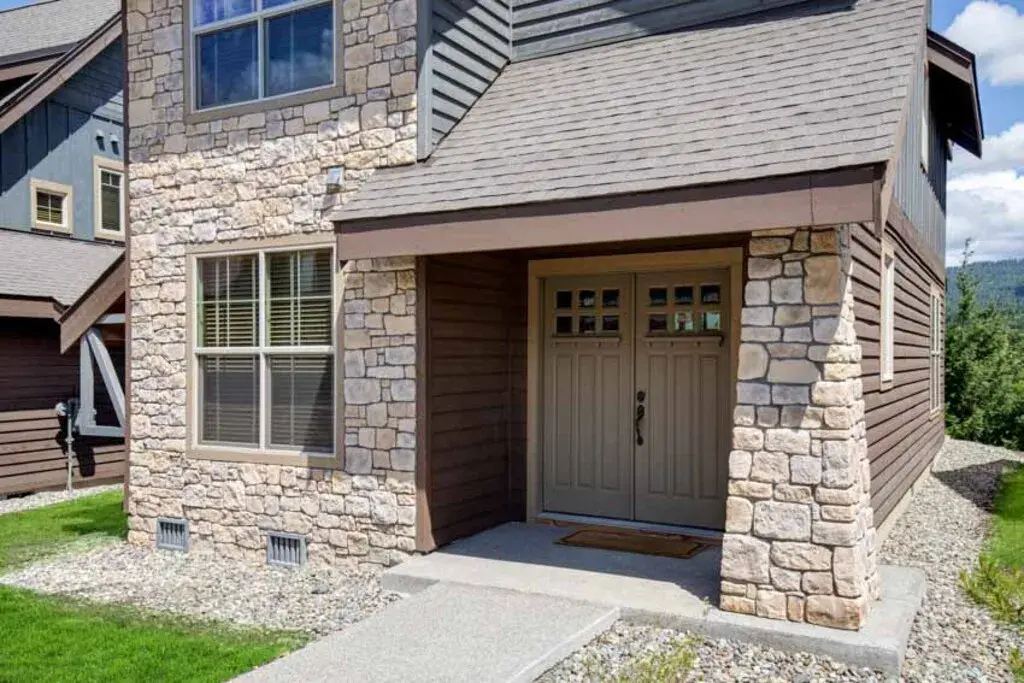
Cast stone is an artificial type of exterior house stone made from a mixture of cement, aggregate, and pigments. It is a very durable stone that is available in a wide variety of colors and patterns. Cast stone is a popular choice for homes that want a traditional or formal look.
Why Cast Stone?
- It offers a cost-effective and versatile alternative to natural stone.
- Cast stone is made from a mixture of cement, fine aggregates, and pigments and can be molded into various shapes and sizes, making it a popular choice for intricate architectural designs.
- It is also durable and resistant to weather and temperature fluctuations.
- Cast stone can imitate the appearance of natural stones such as limestone, sandstone, and granite, and is often used for restoration or renovation projects.
12. Cobblestone: Exterior House Stone
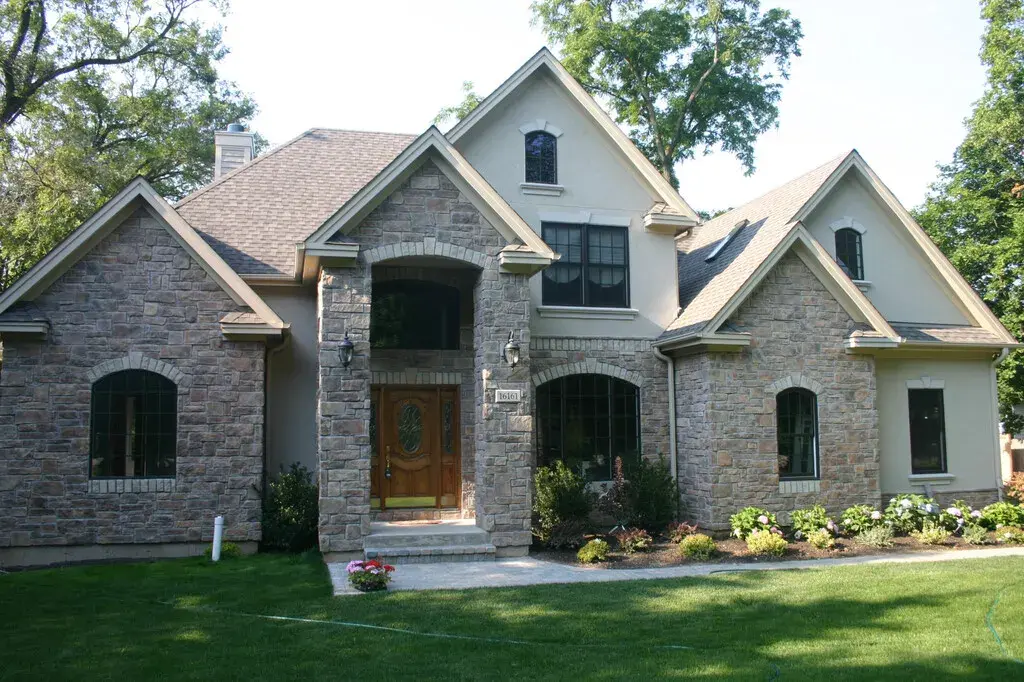
Cobblestone is a type of exterior house stone typically small and rounded in shape. It is often used for paving and flooring. Cobblestone is a popular choice for homes with a traditional or rustic look.
Why Cobblestone?
- It has an aesthetic appeal, durability, and a timeless look.
- It also adds a unique texture and character to homes and can complement various architectural styles.
- Cobblestone is also slip-resistant and can withstand heavy foot traffic and weather conditions.
13. Cultured Exterior House Stone
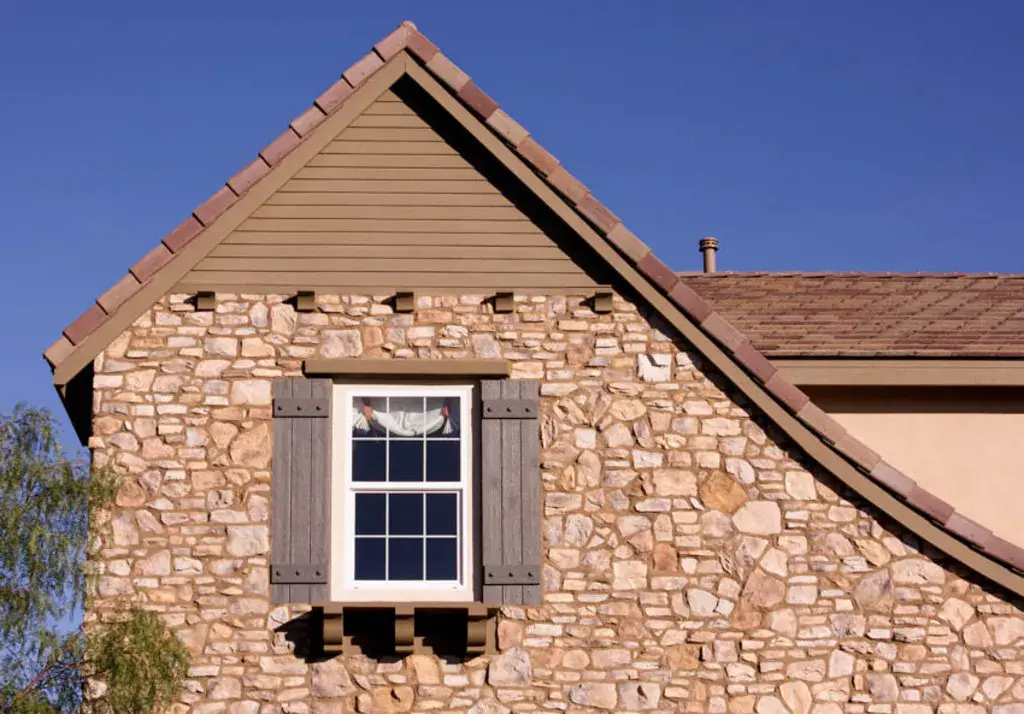
Cultured stone is an artificial type of exterior house stone made to mimic the look of natural stone. It is a very durable and versatile stone that is available in a wide variety of colors and patterns. Cultured stone is a popular choice for homes that want a natural or rustic look.
Why Cultured Stone?
- It is versatile, affordable, and easy to install.
- It is made of lightweight concrete and molded to look like natural stone, allowing for a variety of textures, colors, and shapes to be used in the design.
- It is also durable and resistant to weather, insects, and fire.
14. Ledge Exterior House Stone

Ledge stone is a natural type of exterior house stone that is typically found in ledges or on the sides of hills. It is a natural and rustic stone that is available in a wide variety of colors and patterns. Ledge stone is a popular choice for homes with a traditional or rustic look.
Why Ledge Stone?
- It has a natural, rough texture, versatility, and unique appearance.
- It provides a rustic and earthy look to the exterior of homes.
- It is also durable, weather-resistant, and low maintenance, making it a practical choice for outdoor use.
15. Mosaic Exterior House Stone
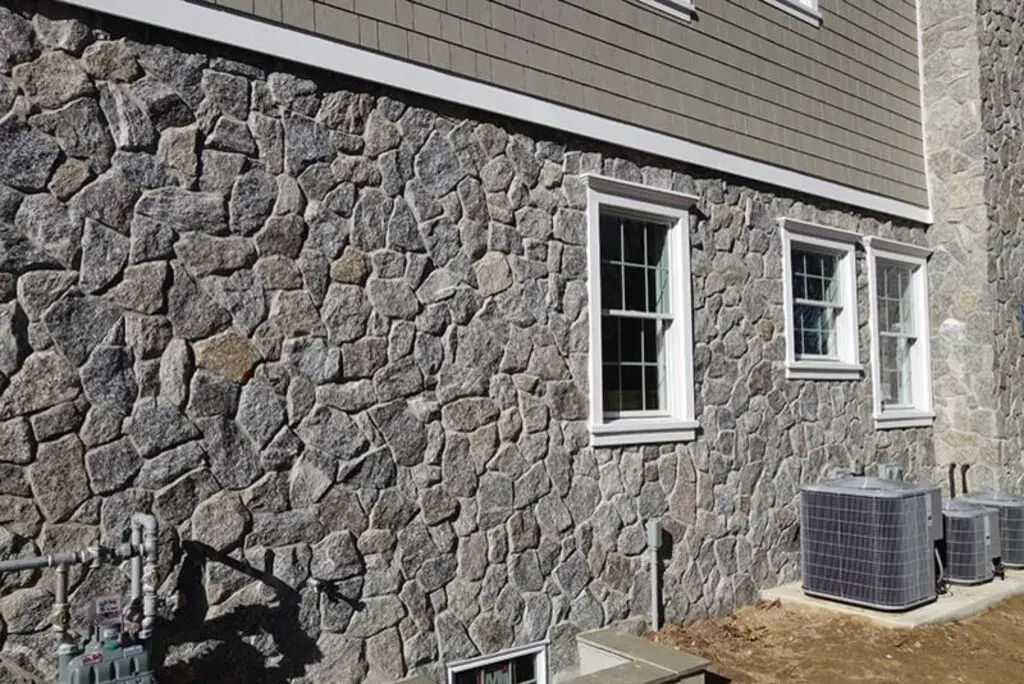
Mosaic stone is a natural or artificial type of exterior house stone cut into small pieces and arranged in patterns to create a decorative surface. It is a versatile and colourful stone often used for flooring and backsplashes.
Why Mosaic Stone?
- It is unique and has a decorative appearance, versatility in pattern and color options, and durability against weather and temperature changes.
- It adds texture and dimension to the exterior of a building, making it a popular choice for architectural and design purposes.
16. River Rock: Exterior House Stone
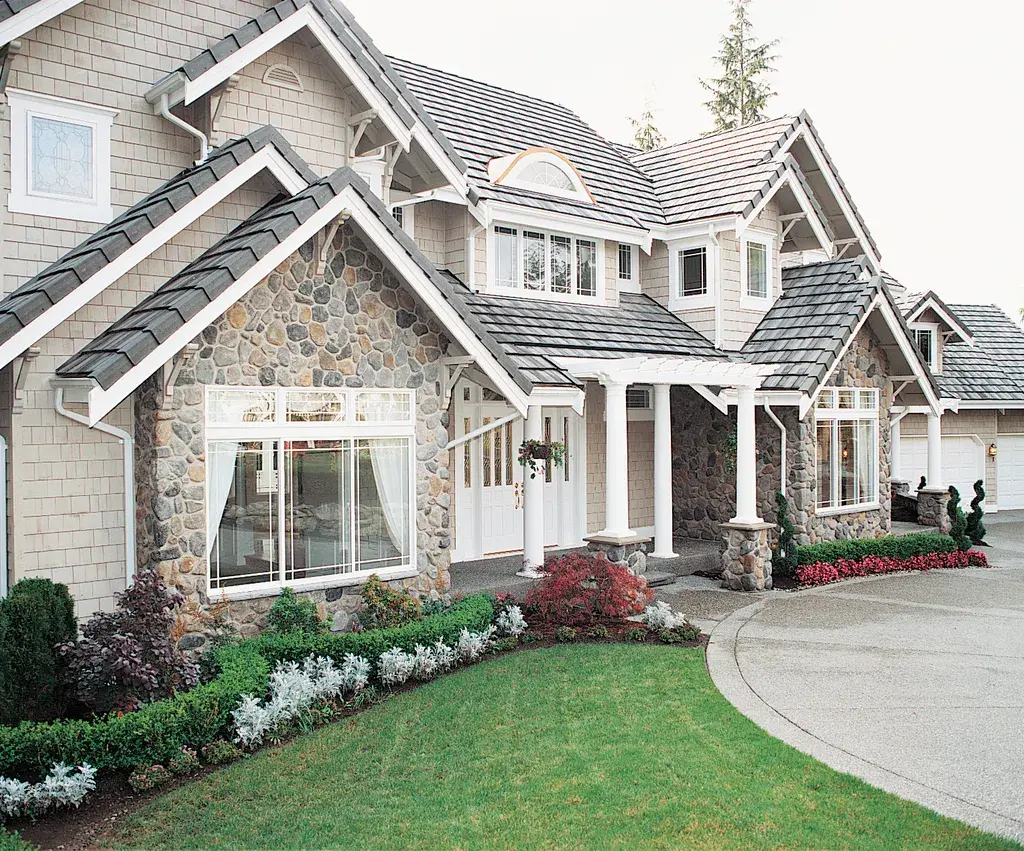
River rock is a natural types of exterior house stone found in rivers and streams. It is a smooth and rounded stone that is available in a wide variety of colors and patterns. River rock is a popular choice for homes that want a natural or rustic look.
Why River Rock?
- It has a natural, organic appearance and the ability to blend in with various landscapes.
- It is also durable, non-slip, and low maintenance.
- River rock provides good drainage and helps with erosion control.
17. Stack Exterior House Stone
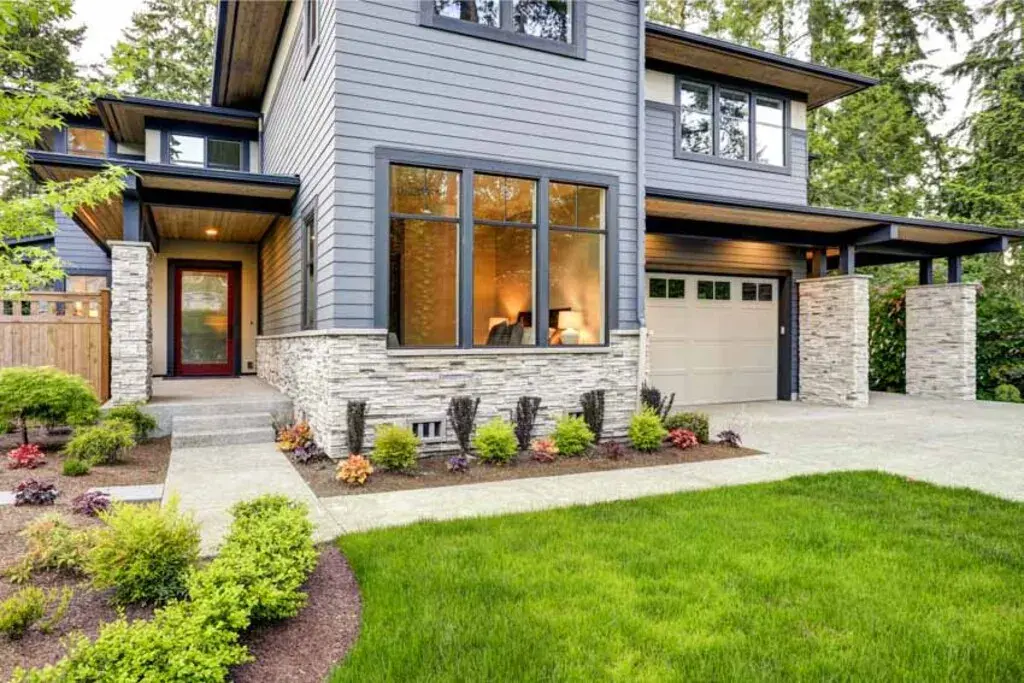
Stack stone is a natural or artificial stone stacked to create a decorative surface. It is a versatile and colorful type of exterior house stone often used for walls and fireplaces.
Why Stack Stone?
- It provides a unique textural element to the facade of a building and can also be used to create retaining walls, fireplaces, and water features.
- Stack stone is also easy to install and maintain, making it a popular choice for exterior cladding.
18. Tumbled Exterior House Stone

Tumbled stone is a natural type of exterior house stone tumbled in a machine to create a smooth and rounded surface. It is a versatile and colorful stone often used for flooring and walls.
Why Tumbled Stone?
- It has a unique texture and appearance, providing a natural, rustic look to homes.
- Tumbling process gives the stone a softer and rounded edge, making it less likely to chip or break, and also provides added grip, making it ideal for exterior use.
- Tumbled stone is also low maintenance and weather resistant.
19. Veneer Exterior House Stone
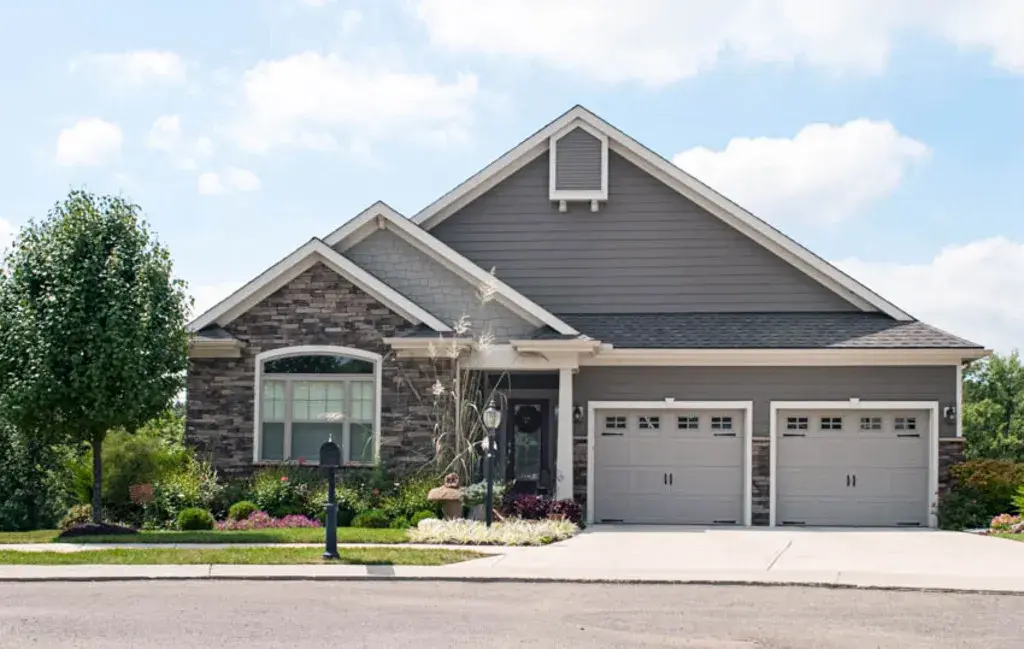
Veneer stone is a type of thin type of exterior house stone applied to a surface to create the look of natural stone. It is a lightweight and versatile stone that is available in a wide variety of colors and patterns.
Why Veneer Stone?
- It provides the aesthetic of natural stone but is lighter and easier to install.
- It is also more cost-effective than solid stone and provides versatility in design options with a wide range of textures, colors, and patterns available.
- Veneer stone can improve insulation and energy efficiency compared to traditional siding materials.
20. Wainscoting Exterior House Stone
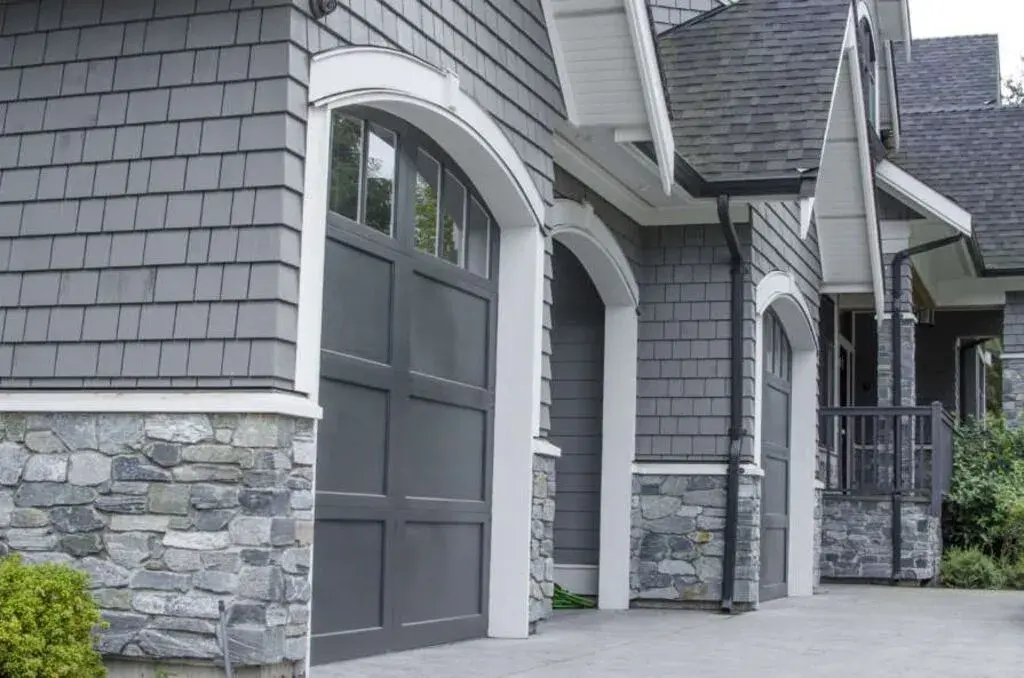
Wainscoting stone is a type of natural or artificial stone used to create a decorative wall surface. It is a versatile and colorful type of exterior house stone often used for walls and fireplaces.
Why Wainscoating Stone?
- It has durability and resistance to weather, fire, and pests.
- It also provides insulation and can add visual interest to the exterior of a building.
- Wainscoting stone is versatile and can be used for a variety of design styles and architectural themes.
4 Tips for Harmonising Natural Exterior House Stone with Other Building Materials Include

- Make sure that the natural types of exterior house stone you choose complement the color and texture of the building’s roofing and siding.
- Use natural stone in a complementary size and shape to the building’s architecture.
- Consider the climate and weather conditions in your area while making a choice.
- Consult with a designer or architect to help guide you in making the right choices for your project.
Endless Possibilities for Creating a Unique and Beautiful Exterior Design
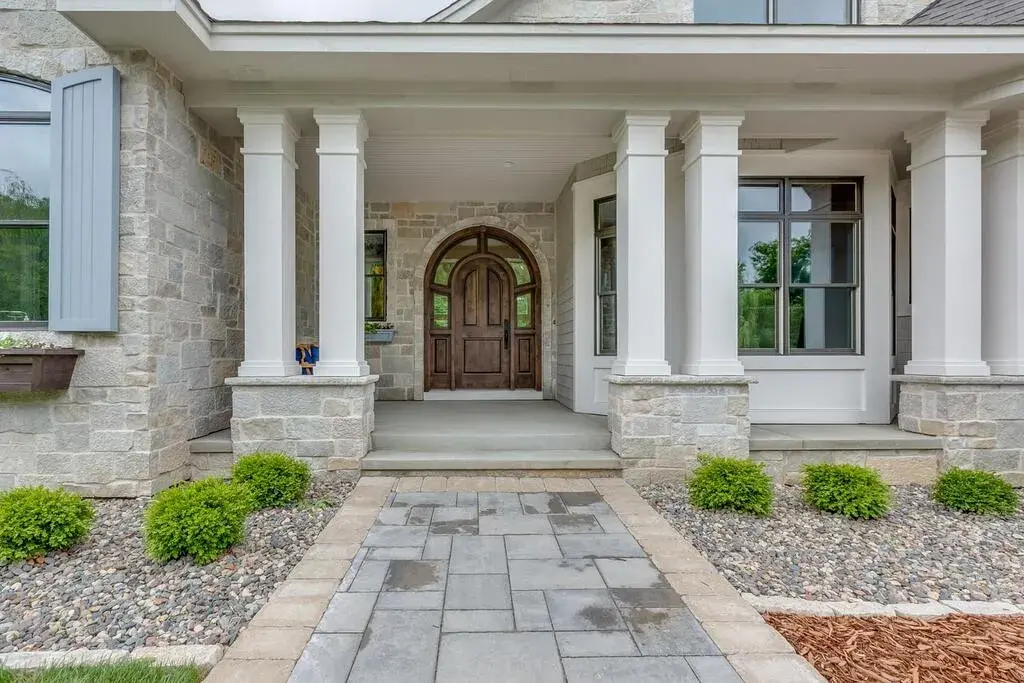
When choosing the suitable types of exterior house stone for your home, it’s essential to consider your style, the look of your neighborhood, and the durability of the stone. Remember that natural types of exterior house stones are unique products with variations in color, texture, and pattern that add to the stone’s character and charm. With so many types of exterior house stones, you’re sure to find the perfect fit for your home on our blog.
FAQs
Granite, limestone, sandstone, and slate are popular natural types of exterior house stones for facades.
Granite and limestone are more durable and resistant to weathering, making them a good choice for areas with high rainfall or extreme temperatures. Sandstone and slate, however, are more porous and may require more maintenance in such environments.
Some ways to incorporate natural types of exterior house stones into the design include using them as cladding or veneer on the exterior walls and as a paving material for walkways, driveways, and patios.
Natural stone can be harmonized with other building materials in the exterior design of a house by making sure that the natural types of exterior house stones chosen complement the color and texture of the building’s roofing and siding.
Some tips for choosing the best natural stone for an exterior house facade include considering the type, design elements, and compatibility with other building materials, exploring the pros and cons of each type of exterior house stone, and considering the climate and weather conditions in the area.
In case you missed it!

